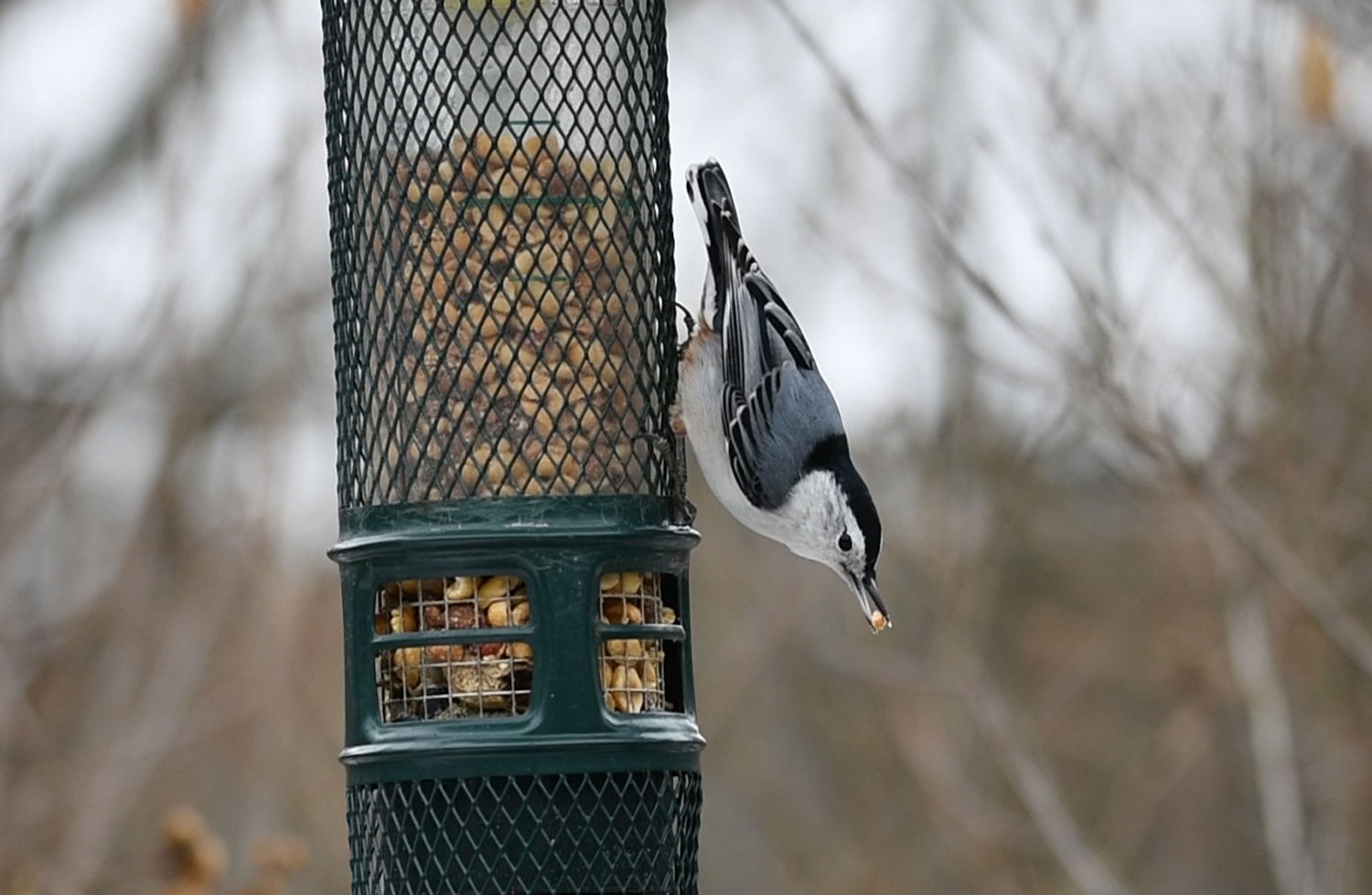Follow these tips to winterize your yard for wildlife

Just like people, animals need reliable sources of food, water and shelter all year long. Some animals use adaptations such as hibernation to survive winter, when these needs are more difficult to meet. Others, like many species of birds, migrate south to places where food and water are much more abundant in winter. But plenty of animals stay put year-round, enduring the harsh winter conditions in the great outdoors.
For these animals, your yard can be a haven come winter — if you take the right steps to make it a welcome and inviting place. Here's some ways you can make your yard a welcome winter habitat for wildlife.
Feed them
Many of the birds we see all year in northern Illinois feast on insects, fruits and seeds during warm weather. However, during winter when the landscape is more barren, food is much less abundant, and bird feeders become a good, reliable source of food, according to the National Audubon Society.
If you have bird feeders, keep them stocked all winter for your resident birds. Good choices include black-oil sunflower seeds, thistle, safflower seeds, cracked corn and peanuts. Suet is also a good offering in winter, because it's high in fat and calories and birds need to consume more calories to stay warm. If you don't have a suet feeder, you can slather peanut butter on pine cones or even tree trunks to offer a high-fat food.
Leaving flowers in their beds for winter, especially flowers that bloom in late summer or fall, provides another food source for birds and other animals, such as squirrels and chipmunks, that eat the seeds.
Provide shelter
If your yard is simply a sea of grass, it's not providing much cover for local wildlife. Considering breaking up your expanse of lawn with trees, bushes and shrubs, which provide both habitat and shelter for creatures of all kinds.
Evergreens, in particular, create good winter shelter for all kinds of wildlife because they remain full all year long, according to Treehugger. Birds can take shelter or roost among the branches, and mammals, too, can hide underneath or among the branches.
If you're thinking of adding a few shrubs or trees to your landscape, consider trees that produce berries, such as juniper or dogwood, because they will provide both food and shelter for birds, according to the Audubon Society. And if you have nesting boxes in your yard, clean them out as winter approaches. Some birds will roost in the boxes during the winter, and you may find that other animals use them for shelter as well. As winter turns to spring, clean them once more to get them ready for nesting season.
Provide habitat
Being a little less vigilant with your fall yard work is a real benefit to wildlife come winter. To start, leaving at least some of your leaves unraked is a boon to some animals. Or, if you want to clear your grass of the fallen leaves, rake them under trees and bushes or into flower beds and leave them be. Doing so provides a habitat for all sorts of creatures. For example, the luna moth overwinters in a cocoon in the layer of leaves on the ground, and wood frogs also shelter for the winter in this leafy ground layer, according to the Humane Gardener.
If your fall yard work includes trimming your trees, bushes and shrubs, collect the trimmings and make a brush pile in the corner of your yard or behind shrubs and trees. You can add to it as you see fit, allowing it to become as large you would like. The brush will quickly begin to serve as a habitat for all manner of wildlife, from insects, reptiles and amphibians looking for a place to spend the winter to mammals such as rabbits and squirrels looking for shelter. Birds, too, will take advantage of your brush pile, using it to seek shelter during a winter storm or as a roosting spot, according to the Audubon Society.
In your flower gardens and beds, allow the stems to remains standing because they provide a place for insects to overwinter, Treehugger advises. If you do cut the stems, consider leaving them stacked in the garden until spring so the insects have a chance to emerge.
Offer water
Providing a continuous source of water during the frigid winter is easier said than done, but animals need a good source of fresh water all year long. Small ponds and birdbaths are obvious choices, but you can also improvise by filling such items as garbage can lids or plant saucers with a few inches of water.
Shallow water no more than 3 inches deep is best for small birds, according to the National Wildlife Federation, but it's not just birds that will benefits from a steady supply of water. You also may see small mammals such as squirrels paying a visit.
Of course, in the dead of winter keeping water in its liquid state can be a challenge. To combat this, buy a heated birdbath or add a heating element to an existing one. Short of that, you can pour hot water on iced-over water supplies to freshen them up or regularly swap our containers of frozen water for fresh ones. If you have a pond, break the ice as it freezes to allow it to serve as a water source all winter.
